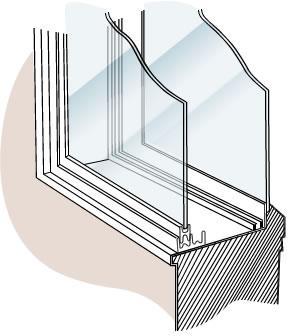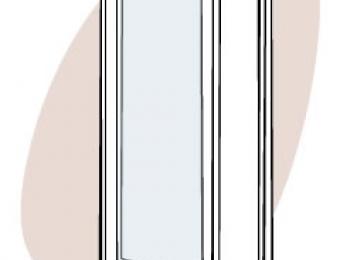Windows are generally poor barriers against noise entering your home and finding a solution is often complex. A standard window with 3mm glass does little to insulate against noise, either open or closed. Even the performance of good insulation within your walls can be substantially reduced by poor window design.
Building a new home or renovating an existing one is an ideal time to consider your acoustic requirements. For neighbourhood, traffic and building noise there are a number of convenient window solutions available as mentioned below. Additionally, there are a range of windows specifically made for improved acoustic performance available from window suppliers.
- Tip: Always verify the manufacturer's claims of noise reduction, as you might find that claims are only valid for specific frequencies.
For specific or high level noise problems, it’s worth consulting with an acoustics engineer for the right solution. The acoustics engineer will assess the levels and types of noise affecting your home and specify the acoustic performance requirements for all elements of your home including your windows.

Double glazing
The most effective barrier against noise is to install a secondary window, otherwise known as ‘add on double glazing’. With an ideal space of 100-200mm between the two windows, your noise problem will be significantly reduced. Note that such large gaps increase air movement and will reduce your window’s thermal performance. Another important consideration is the space required for secondary glazing may not be practical in a normal home.
Standard double glazing with at least a 12mm gap is effective at reducing the transmission of medium to high frequencies (human voice). For low frequencies (traffic) using a different thickness of glass in each pane, or incorporating laminated glass, can help to cut noise transmission.
Laminated glass
Laminated glass is the next best option after secondary glazing to reduce noise but is usually more effective at reducing high frequencies such as aircraft noise. Recent technological advances in the manufacturing of the interlayer, contained within laminated glass, have shown an improvement in acoustic performance. A thicker interlayer than what is commonly used can also benefit acoustic control.
Thick glass
The thicker the glass, the better the sound insulation properties. The further the sound has to travel through the glass, the more sound waves will drop off. Thicker glass is a common solution to reduce low frequency sounds like common traffic and neighbourhood noise. It is especially effective when combined with double glazing.
Noise reduction by glass type
The table below shows the percentage noise reduction for various options compared to 3mm glass.
| Voice noise reduction | % | Traffic noise reduction | % |
|---|---|---|---|
| Single glazing | Single glazing | ||
| 6.38mm laminated glass | 13 | 6.38 laminated glass | 24 |
| 10mm glass | 24 | 10mm glass | 38 |
| 10.38mm laminated glass | 29 | 10.38mm laminated glass | 43 |
| Double glazing | Double glazing | ||
| 4mm/12mm gap/4mm | 19 | 10mm/12mm gap/6.38mm laminated glass | 46 |
| 10mm/12mm gap/6mm | 34 | 6mm/100mm gap/4mm | 57 |
| 6.38 laminated/8mm gap/4mm | 46 |
What else to look for
- Window styles
- Air gaps
Window styles
How well your windows perform at controlling noise levels depends largely on how much air can escape through seals. Awning and casement style windows (compression style windows) provide a tighter seal against the frame, therefore reducing noise transmission. Sliding windows such as double hung and horizontal sliding, generally allow greater air infiltration resulting in increased noise transmission.
Air gaps
Even when acoustic-specific windows are fitted, if there is even the smallest of air leaks, windows can be ineffective at insulating against noise. All possible entry points for noise in your home should be checked and sealed off during and after installation. This includes gaps in and around window frames, wall and ceiling vents, loose fitting doors and windows, gaps in walls and floors and the construction and insulation of walls and ceilings.
Tips for reducing noise
- Use thicker glass to reduce traffic noise
- Use double glazing to reduce high frequency noise (voices)
- Install windows away from noise sources
- Avoid placing windows and doors directly opposite or adjacent to neighbouring houses or units
- Seal cracks and gaps around windows to achieve better sound reduction
- Check manufacturer's claims of noise reduction for both high and low frequencies
- Consult an acoustic engineer





